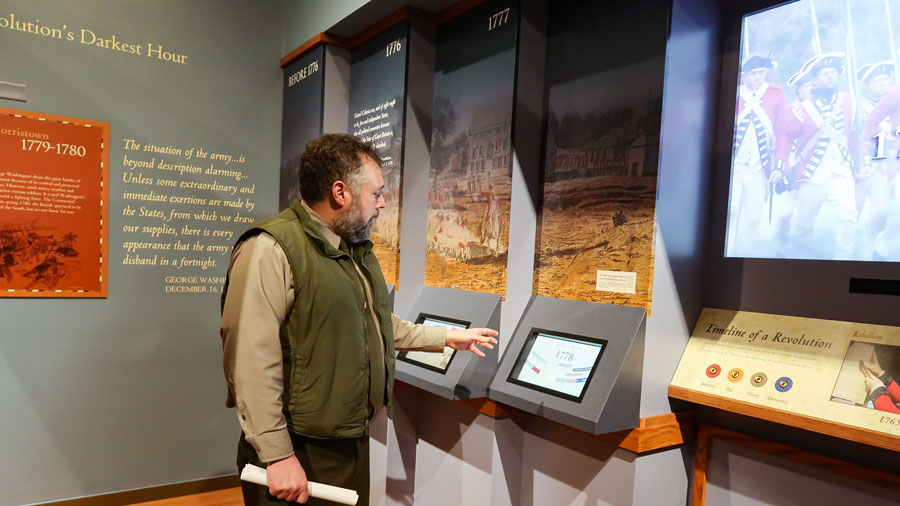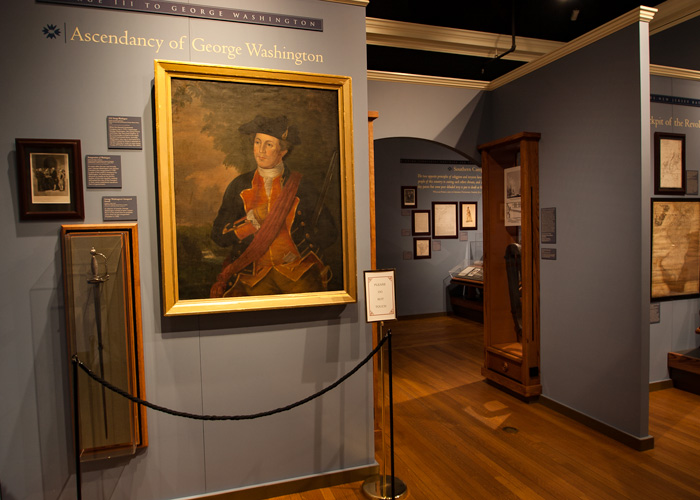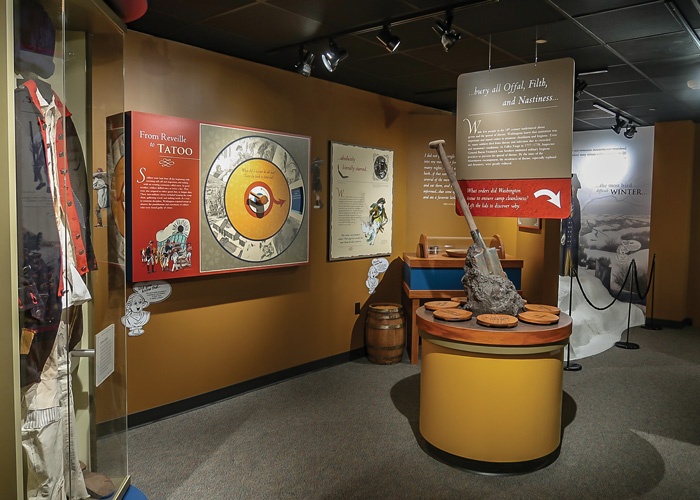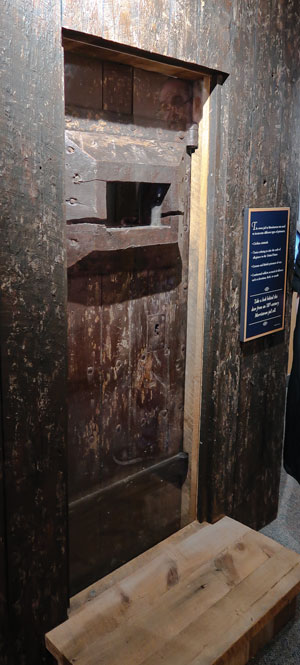Washington’s Headquarters at the Ford Mansion is one of four national treasures from a crucial time during the Revolutionary War that comprise Morristown National Historical Park (MNHP). An archipelago of forts and encampments, homesteads and farmland begins at the Ford Mansion and Fort Nonsense in Morristown, and stretches southward towards the Jockey Hollow winter encampment of 1779-80 and the New Jersey Brigade Area, at the border of Morris and Somerset counties. The Headquarters property is also the location of the Washington Headquarters Museum, an institution that emerged from the energy and commitment of a handful of prominent benefactors in the 19th century, who formed The Washington Association of New Jersey. It is the view looking north from the rear of the Ford Mansion that reveals the intent and inspiration of the Museum’s architect, John Russell Pope; a perspective that strongly evokes the sweep and grandeur of George Washington’s own Mount Vernon. The structure secures the substantial collection of the Washington Association and other acquisitions, today numbering more than a half-million pieces. Inside, original documents, textiles, paintings, period weapons, prints, china, maps, and other artifacts—less than 1% of which have ever been seen by the public—are housed in its vaults.

With growing collections and demands for accessibility, the construction of a new northeast wing in 2005, modernized physical access to the Museum, and created the space required to house the collection and accommodate research. The latest phase, the result of nearly a decade of work was completed in 2018 with the opening of the Military Gallery and the new Discover History Center (DHC), a $2.2 million dollar project for the 21st –century. The Washington Association’s fundraising efforts — including gifts from members, friends, and corporations — contributed $1.8 million dollars to the project, enabling its completion.


The ground floor Military Gallery is somewhat in keeping with the austerity of the pedestaled marble bust of Washington, cordoned off in the entrance hall to the museum. Incorporating an interactive timeline that tells the entire history of the Revolutionary War, the collected art and armor help us appreciate the resourcefulness and the coincident sacrifice of our Revolutionary forebears. Touch screens that describe seminal events through the entire colonial geography, beyond the New Jersey frontier, are complemented by a rich assortment of artifacts displayed, for the most part, under glass. From Morristown come relics of simple practicality and folk wisdom: a hand-fashioned shovel and frying pan, and medical devices and improvisations crucial in winning a war of survival.
Downstairs, the story of “When the War came to Morristown” continues, but with a new and entirely different approach in the Discover History Center. Visitors jump into an arcade of history, a labyrinth of interactive exhibits with spinning roulette wheels and slot machine handles, each pleading for a touch, each with a purpose. “There are several places where you have to look at the choices that Washington made, or that the civilians made,” notes Burt Dunkerly, Acting Chief of Interpretation and Education. “It really brings it home that these were real life decisions. We put visitors in those situations.”



Visualize the realities of the Patriot army’s predicament at a huge interactive map that illustrates troops, outposts, enemy troops, critical support, roads and rivers, and natural resources in the region. Then walk from station to station that narrate stories from motion-activated halo speakers. Open drawers and panels that reveal Washington’s support system — from his servants and slaves to his aides-de-camp — as the general and his officers faced the challenge of providing for the troops during the Hard Winter of 1789-80. Try your luck at preparing a shipment of supplies for 250 soldiers. Buy or forage? Take from local citizens? How to send a message? Then confront the plight of a common soldier, stranded for months in bitter cold. Climb into his bunk, turn a knob to reveal his everyday chores. Wear his tattered uniform, feel the weight of his 56 lb. equipment pack, or lift a musket. Confront literal starvation on rations of bark and roasted shoes. Lift a series of lids to discover orders issued for camp cleanliness: the disciplines prescribed to manage the “necessaries”. Then learn about hospital rooms, suitable for six men, crowded with twenty. Study aspects of military justice at a series of interactive panels, or peer through the original door to the Morristown jail that confined citizens and soldiers disparate to the Patriot cause.

“This was a very complex time, not as clear cut as usually portrayed. Sometimes it was neighbor against neighbor,” explains Jude Pfister, Chief of Cultural Resources at MNHP. “The intricacies are hard to convey, and it was difficult to decide what to include. But these displays make the artifacts easy to connect with, because you don’t have to read anything.” Even so, the team spent untold hours working out phrasing on signs throughout the exhibit intended to immerse each visitor in the historical experience. There is a balance that will involve both school children and serious students of history. No one can emerge from the Discover History Center having learned nothing.
The Washington Museum is open Wednesday-Sunday, 9:30am to 5pm. During museum operating hours, guided tours of the Ford Mansion are available by timed tickets available at the museum information desk. Admission to the Washington’s Headquarters Museum and Ford Mansion tours is free to the public. For more information click or call the museum at 973-539-2016 x-210.
The Millstone Scenic Byway includes eight historic districts along the D&R Canal, an oasis of preserved land, outdoor recreation areas in southern Somerset County
Even today, if you needed a natural hideout—a really good one—Jonathan’s Woods could work.
Part of the Morristown National Historic Park, the formal walled garden, 200-foot wisteria-covered pergola, mountain laurel allee and North American perennials garden was designed by local landscape architect Clarence Fowler.
The Jacobus Vanderveer house is the only surviving building associated with the Pluckemin encampment.
Paths of green, fields of gold!